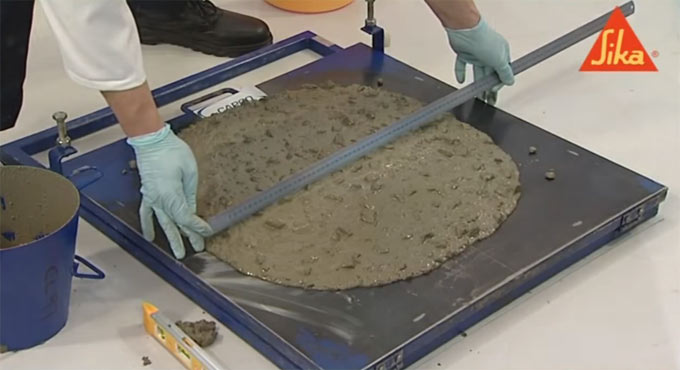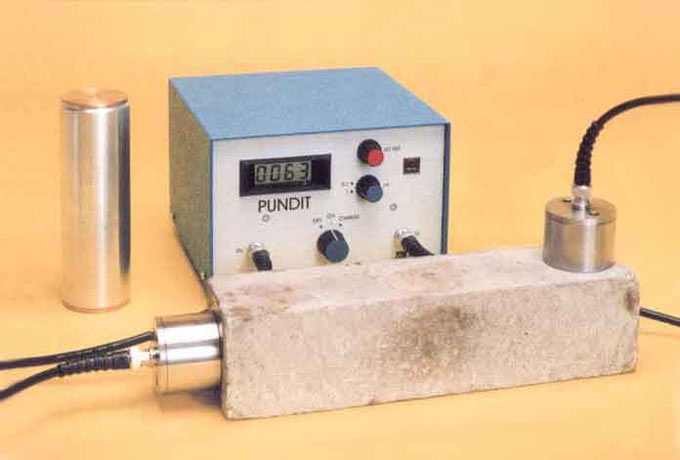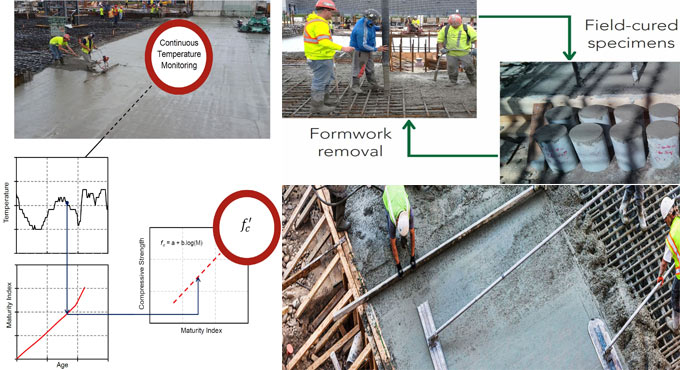Workability belongs to a vital factor of concrete that directly affects the strength, quality and look of concrete as well as finds out how easily freshly produced concrete is blended, set, compacted and finished by retaining its consistency as it is.
To examine the functionality of the freshly mixed concrete, the following tests are generally conducted on field and lab.
Slump test, Kelly ball test, K slump test, Vee bee consistometer test, Flow table test
In this article, detail information is given on flow table test of concrete.
Flow table test of concrete: Under this test method, the functionality of concrete is established by checking the flowing property of concrete.
With Flow table test of concrete, the quality of concrete is found based on the uniformity, cohesiveness and the susceptibility to segregation.
This flow table test is adhered to BS 1881 part 105 of 1984 and DIN 1048 part I.
The following equipments are required for Flow Table Test:
Flow table is built up with metal with thickness 1.5mm and dimensions 750mmx 750mm, tamping rod constructed with hardwood, Scoop, Centimeter Scale, Metal Cone or mould (Lower Dia = 20cm, upper Dia = 13 cm, Height of Cone = 20cm). The central part of flow table is pointed with a concentric circle of dia 200mm to arrange a metal cone on it.
Flow table test is conducted with the following methods :-
Get concrete ready according to mix design and set the flow table on a horizontal surface.
Cleanse the dust or other gritty material on flow table and spray a hand of water on it.
Now, set the metal cone at the central part of the flow table and rest on it.
Pour the freshly mixed concrete in the mould containing two layers; each layer is tamped with tamping rod for 25times. Once the last layer is tamped, the overflowed concrete on the cone is jammed with a trowel.
Gradually, raise the mould upright & allow concrete to rest on its own devoid of any support.
The flow table is elevated at the height of 12.5mm and dropped. The same procedure is reiterated for 15times in 15secs.
Calculate the spread of concrete in diameter with centimetre scale horizontally and vertically. The arithmetic mean of the two diameters should be the calculation of flow in millimetres.

Read more
~~~~~~~~~~~~~~~~~~~~~~~~
Published By
Rajib Dey
www.constructioncost.co
~~~~~~~~~~~~~~~~~~~~~~~~
To examine the functionality of the freshly mixed concrete, the following tests are generally conducted on field and lab.
Slump test, Kelly ball test, K slump test, Vee bee consistometer test, Flow table test
In this article, detail information is given on flow table test of concrete.
Flow table test of concrete: Under this test method, the functionality of concrete is established by checking the flowing property of concrete.
With Flow table test of concrete, the quality of concrete is found based on the uniformity, cohesiveness and the susceptibility to segregation.
This flow table test is adhered to BS 1881 part 105 of 1984 and DIN 1048 part I.
The following equipments are required for Flow Table Test:
Flow table is built up with metal with thickness 1.5mm and dimensions 750mmx 750mm, tamping rod constructed with hardwood, Scoop, Centimeter Scale, Metal Cone or mould (Lower Dia = 20cm, upper Dia = 13 cm, Height of Cone = 20cm). The central part of flow table is pointed with a concentric circle of dia 200mm to arrange a metal cone on it.
Flow table test is conducted with the following methods :-
Get concrete ready according to mix design and set the flow table on a horizontal surface.
Cleanse the dust or other gritty material on flow table and spray a hand of water on it.
Now, set the metal cone at the central part of the flow table and rest on it.
Pour the freshly mixed concrete in the mould containing two layers; each layer is tamped with tamping rod for 25times. Once the last layer is tamped, the overflowed concrete on the cone is jammed with a trowel.
Gradually, raise the mould upright & allow concrete to rest on its own devoid of any support.
The flow table is elevated at the height of 12.5mm and dropped. The same procedure is reiterated for 15times in 15secs.
Calculate the spread of concrete in diameter with centimetre scale horizontally and vertically. The arithmetic mean of the two diameters should be the calculation of flow in millimetres.

Read more
~~~~~~~~~~~~~~~~~~~~~~~~
Published By
Rajib Dey
www.constructioncost.co
~~~~~~~~~~~~~~~~~~~~~~~~

